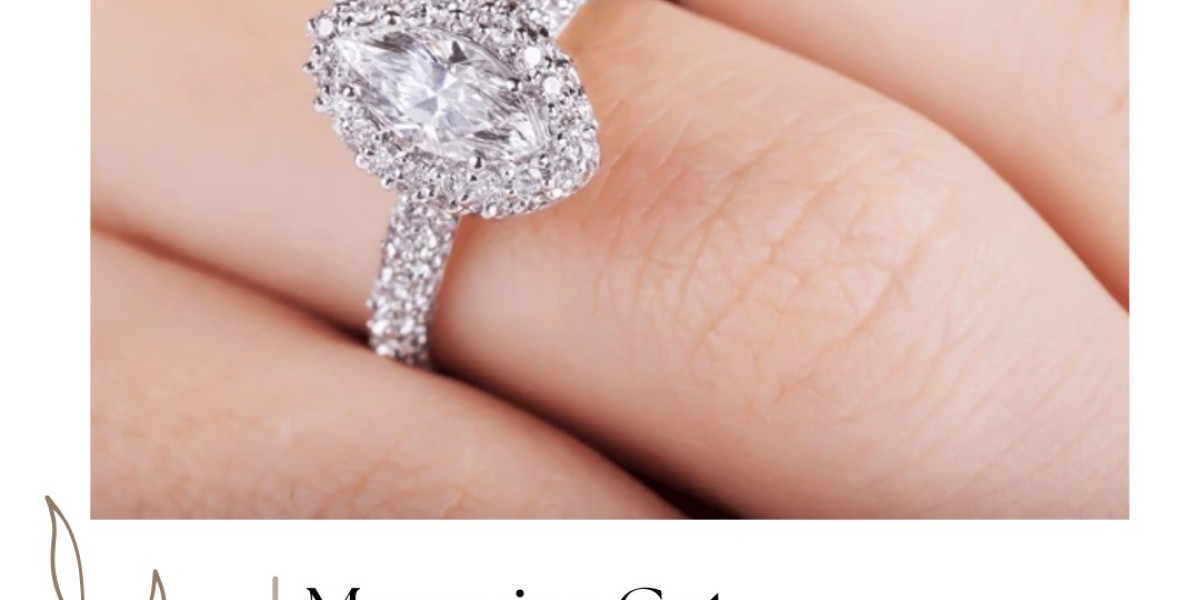Marquise moissanite engagement rings combine timeless elegance with a fascinating history. The marquise cut, known for its unique and elongated shape, and moissanite, celebrated for its brilliance and affordability, create a captivating choice for engagement rings. Here’s the story behind these stunning rings and how they became a cherished option for couples around the world.
The Origin of Moissanite
Discovery:
Moissanite was discovered in 1893 by French chemist Henri Moissan. While examining a meteor crater in Arizona, Moissan found tiny crystals that were unlike anything known at the time. These crystals were eventually identified as a new mineral composed of silicon carbide, which Moissan named "moissanite" in his honor.
Historical Significance:
Initially, moissanite was only found in meteorites and was extremely rare. It wasn't until the 20th century that scientists figured out how to create synthetic moissanite in a lab. This breakthrough allowed moissanite to be produced in larger quantities and made it accessible as a gemstone for jewelry.
The Marquise Cut
Historical Roots:
The marquise cut, characterized by its elongated, pointed shape, has a regal history. The cut is believed to have been commissioned in the 18th century by King Louis XV of France. The story goes that he wanted a cut that would resemble the smile of his mistress, the Marquise de Pompadour. The cut was designed to highlight the brilliance of the stone while mimicking the graceful shape of her lips.
Design Features:
The marquise cut features an elliptical shape with pointed ends, creating a sense of length and elegance. The shape is also known as the “navette” cut, referring to its boat-like appearance. Its unique design maximizes the stone’s visual impact, making it a popular choice for those seeking a distinctive and eye-catching engagement ring.
The Rise of Marquise Moissanite Engagement Rings
Combination of Beauty and Brilliance:
Marquise moissanite engagement rings blend the allure of the marquise cut with the brilliance of moissanite. Moissanite’s exceptional sparkle, due to its high refractive index, enhances the marquise cut’s unique shape. This combination offers a ring that is both dazzling and distinctive.
Affordability and Ethics:
Moissanite is celebrated not only for its beauty but also for its affordability compared to traditional diamonds. As a lab-created gemstone, moissanite is also an ethical choice, as it avoids the environmental and ethical concerns associated with diamond mining. This makes marquise moissanite engagement rings an appealing option for couples who value both style and responsibility.
Modern Appeal:
In recent years, marquise moissanite engagement rings have gained popularity due to their elegant appearance and unique style. The marquise cut’s ability to make the stone appear larger, combined with moissanite’s brilliance, has made it a favored choice among those seeking an engagement ring that stands out from the crowd.
Conclusion
The story of marquise moissanite engagement rings is one of historical elegance and modern innovation. From the discovery of moissanite by Henri Moissan to the creation of the marquise cut by King Louis XV, these rings bring together a rich history with contemporary style. Marquise moissanite engagement rings offer a unique and beautiful alternative to traditional diamond rings, making them a special choice for those who want their engagement ring to tell a story of both timeless beauty and modern brilliance.









